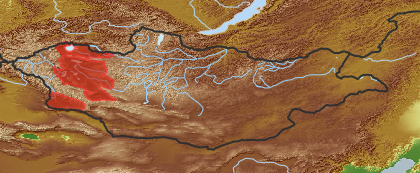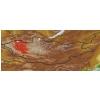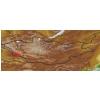| Class: | angiosperms |
| Order: | Lamiales |
| Family: | Lentibulariaceae |
| Genus: | Utricularia |
| Scientific name: | Utricularia australis R. Br. |
| Name acc. to: | Gubanov 1996, not in Grubov 1982/2001 |
| Herbar: | list records  |
| Description: | Trap bladders located on all green leaves radially arranged on stem. Leaves 1.5-4 cm long; bladders 0.5-2.5 mm long. Bracts orbicular. Flowers large, 12-15 mm in diameter, palate glabrous, lower lip transversely elliptic, margins of lower corolla lip spreading, spur broadly conic. |
| Confuse with: | vegetative difficult to distinguish from U. vulgaris |
| Link to Flora of China: | http://www.efloras.org/browse.aspx?flora_id=2&name_str=Utricularia+australis |
| open map in a new window |  |
| Habit (i)general appearance of a plant | |
| Growth form: (i)Herb, shrub, tree or climber. | herb (i)Herbaceous, erect plant, up to 2m high, mostly with a leafy shoot; if perennial, shoots die to the ground each season, shoots are not woody
example: Artemisia pectinata 
perennial (i)Living for several to many years, as opposed to annual and biennial
acc. to: FoC online |
| Parasite status: (i)Is the plant a half- or full parasite? | no parasite/saprophyte (i)Plant fully autonomous, leaves with chlorophyll
example: Most plants, Ranunculus  inherited by family Lentibulariaceae: no parasite/saprophyte inherited by family Lentibulariaceae: no parasite/saprophyte
|
| Water or terrestrial plant: (i)Where do the plants grow? | water or swamp plant  inherited by family Lentibulariaceae: water or swamp plant inherited by family Lentibulariaceae: water or swamp plant
|
| Leaf (i)expanded, usually photosynthetic organ of a plant (including phylloclades) | |
| Leaf veination: (i)Arrangement of the main veins of a leaf. | pinnate (i)One main vein, several side veins, sometimes inconspicuous
example: Cicerbita     inherited by family Lentibulariaceae: pinnate inherited by family Lentibulariaceae: pinnate
|
| Root / shoot below ground (i)plant part below ground (in most cases), including below ground shoots, without leaves | |
| Root type: (i)Organisation of the roots. | allorhizous (i)Plant with a conspicuous tap root, one larger tap root with side roots
example: Dicotyledonae  inherited by order Lamiales: allorhizous inherited by order Lamiales: allorhizous
|
| Distribution (i)region where the plant is likely to be found | |
| Distribution (Veg. Zones): (i)acc. to Grubov 1952 | Depression of Great Lakes (i)In distribution data often named as '10' 
Dzungarian Gobi (i)In distribution data often named as '14' 
acc. to: Gubanov 1996 |